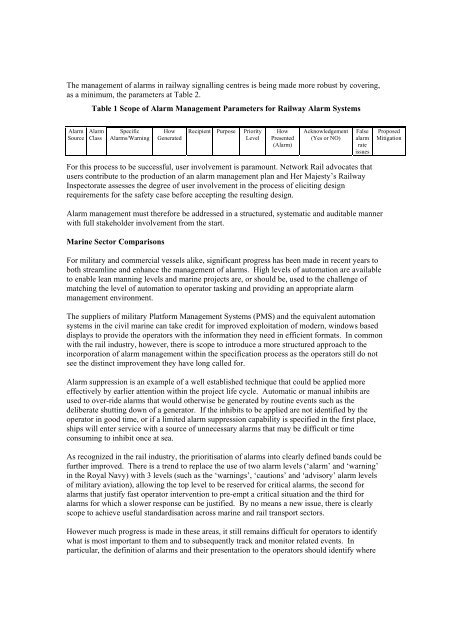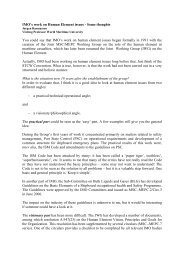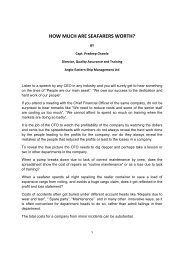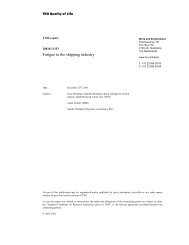noncritical
Download PDF - Alert!
Download PDF - Alert!
- No tags were found...
You also want an ePaper? Increase the reach of your titles
YUMPU automatically turns print PDFs into web optimized ePapers that Google loves.
The management of alarms in railway signalling centres is being made more robust by covering,<br />
as a minimum, the parameters at Table 2.<br />
Table 1 Scope of Alarm Management Parameters for Railway Alarm Systems<br />
Alarm<br />
Source<br />
Alarm<br />
Class<br />
Specific<br />
Alarms/Warning<br />
How<br />
Generated<br />
Recipient Purpose<br />
Priority<br />
Level<br />
How<br />
Presented<br />
(Alarm)<br />
Acknowledgement<br />
(Yes or NO)<br />
False<br />
alarm<br />
rate<br />
issues<br />
Proposed<br />
Mitigation<br />
For this process to be successful, user involvement is paramount. Network Rail advocates that<br />
users contribute to the production of an alarm management plan and Her Majesty’s Railway<br />
Inspectorate assesses the degree of user involvement in the process of eliciting design<br />
requirements for the safety case before accepting the resulting design.<br />
Alarm management must therefore be addressed in a structured, systematic and auditable manner<br />
with full stakeholder involvement from the start.<br />
Marine Sector Comparisons<br />
For military and commercial vessels alike, significant progress has been made in recent years to<br />
both streamline and enhance the management of alarms. High levels of automation are available<br />
to enable lean manning levels and marine projects are, or should be, used to the challenge of<br />
matching the level of automation to operator tasking and providing an appropriate alarm<br />
management environment.<br />
The suppliers of military Platform Management Systems (PMS) and the equivalent automation<br />
systems in the civil marine can take credit for improved exploitation of modern, windows based<br />
displays to provide the operators with the information they need in efficient formats. In common<br />
with the rail industry, however, there is scope to introduce a more structured approach to the<br />
incorporation of alarm management within the specification process as the operators still do not<br />
see the distinct improvement they have long called for.<br />
Alarm suppression is an example of a well established technique that could be applied more<br />
effectively by earlier attention within the project life cycle. Automatic or manual inhibits are<br />
used to over-ride alarms that would otherwise be generated by routine events such as the<br />
deliberate shutting down of a generator. If the inhibits to be applied are not identified by the<br />
operator in good time, or if a limited alarm suppression capability is specified in the first place,<br />
ships will enter service with a source of unnecessary alarms that may be difficult or time<br />
consuming to inhibit once at sea.<br />
As recognized in the rail industry, the prioritisation of alarms into clearly defined bands could be<br />
further improved. There is a trend to replace the use of two alarm levels (‘alarm’ and ‘warning’<br />
in the Royal Navy) with 3 levels (such as the ‘warnings’, ‘cautions’ and ‘advisory’ alarm levels<br />
of military aviation), allowing the top level to be reserved for critical alarms, the second for<br />
alarms that justify fast operator intervention to pre-empt a critical situation and the third for<br />
alarms for which a slower response can be justified. By no means a new issue, there is clearly<br />
scope to achieve useful standardisation across marine and rail transport sectors.<br />
However much progress is made in these areas, it still remains difficult for operators to identify<br />
what is most important to them and to subsequently track and monitor related events. In<br />
particular, the definition of alarms and their presentation to the operators should identify where
















